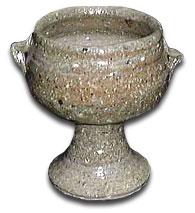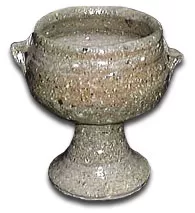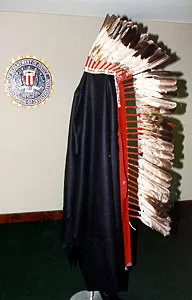The Japanese province of Satsuma gave its name to a variety of wares that were made all over the country and exported all over the world in the latter half of the 19th century.
Combining undoubted ornamental quality with a whiff of oriental exoticism, Satsuma ware became all the rage in Western Europe in the decades around the turn of the century.
In Japan, the name Satsuma is applied only to pottery produced in the province. Much of this was made in the 17th and 18th centuries by Korean potters who were settled there after Japan invaded their homeland in 1592. They made simple earthenware vessels with thick, dark glazes.
In the second half of the 19th century, Japan which had been a closed society for next 200 years, began to reopen its doors to overseas trade. Exhibitions in London and Paris, in particular, introduced Europeans to Japanese arts and crafts, whose exotic appeal soon found favour with collectors.
One of the earliest products to be exported was a light, porous earthenware with a soft, cream glaze that showed brown undertints and often had a very fine crackle.
The best pieces looked much like ivory, and were decorated with bright enamels and gilding, often in a different factory or workshop. This style became known in the West as Satsuma ware, though it was produced by large and small workshops all over the country.
eBay‘s listings of Japanese Pottery.
Decorative Styles
At first, pieces were decorated in a restrained manner typical of Japanese taste, with birds, flowers and landscapes but, from the 1880s on, Japanese potters, especially those based in Kyoto, produced wares specifically for European tastes; warriors, saints, geishas and dragons often covered much of the surface, obscuring the crackle glaze. Gilded floral patterns were another export item.
As the fad for all things Japanese grew at the end of the 19th century, a wider and wider variety of wares were produced; incense burners, ornamental bowls, covered vases, pot pourri, boxes, jardinieres, wine pots and figurines were all exported in huge numbers.
Many British households had pairs of huge vases to stand at the foot of the staircase or on either side of the fireplace, while at the other end of the scale there were Satsuma buttons, hatpin and buckles to lend an oriental flavour to women’s fashions.
A great boom in the popularity of Satsuma ware around the turn of the century inevitably led to a deterioration in standards.
Mass-produced wares were often smothered in a slapdash jumble of decorative motifs that were completely at odds with the Japanese artistic virtues of discipline and restraint.
At the same time, however – and often in the same factory – there were decorators creating beautifully crafted objects for the home market and the foreign connoisseur, and these are widely collected today.
Collector’s Notes
It is difficult to overestimate the popularity of Satsuma ware in the late 19th century. A contemporary English potter wrote that ‘the art of Japan has, in a remarkable manner, made for itself a home in the West. It has entered the drawing room and the library, the boudoir and even the nursery.’
As a result of this, there is plenty of Satsuma on the market today, and it is a rich field for the collector. Finer pieces can be found in specialist and general auctions all over the world, and in specialist and general antiques hops. Antiques fairs and markets, and even the occasional boot sale and jumble sale, may also yield good finds.
Building a Collection
Virtually all Satsuma ware is collectable, though prices can vary enormously. If you’d like to build up a collection, you’ll probably find it earlier to begin with smaller, later pieces. The key thing to look for is care and detail in the painted decoration.
The cream base meant that white enamels could be used in the painting, while the crackle in the glaze allowed the colours to sink in, making peeling and flaking unusual.
Colour was often rubbed into the cracks to increase the decorative effect, while whole pieces were sometimes artificially aged with tea, sulphuric acid or smoke.
Many of the finest potters signed their works – in Japanese characters, naturally – and would be serious collectors should check reference books to familiarize themselves with the signatures of famous names such as Ryuzan, Kinkozan and Yabu Meizan.
Look for signatures on the base, usually painted in gold but sometimes impressed, and for decorators marks on the panels.
These can greatly increase the value of a piece. Other marks to watch out for are the Satsuma mon – a cross within a circle that was the badge of the province’s ruling family – and the word ‘Satsuma’ itself, which may appear in Japanese or English.
Because there is so much Satsuma ware available in the West, collectors usually avoid chipped, cracked or otherwise damaged pieces. The only exception is when an otherwise very fine piece of work is slightly damaged, and even here the price can be reduced dramatically.
Further Reading
Imari, Satsuma and Other Japanese Export Ceramics by Nancy Schiffer
Chinese Ceramics by Li He
Japanese Porcelain 1800-1950 by Nancy Schiffer
Chinese Ceramics: Porcelain of the Qing Dynasty 1644-1911) by Rose Kerr
Japanese Pottery in the USA
Until recently, Japanese pottery in the United States was mainly sold to people in the U.S. Now eBay and other Internet auctions have opened the market to buyers who can’t get to U.S. auctions in person.
Many Japanese collectors are buying Japanese pottery that was previously unattainable to them, because it was in the United States.


The Japanese pottery market in this country has not been good. It’s strange.
There’s been a lot of buying on the Web by Japanese. It’s because Japanese buyers don’t buy from auctions. They can find things very cheap on the Web. Consequently, if you look at auction houses, the amount of activity is minuscule compared to five years ago. There used to be two catalogues per year of lacquer, ceramics, etc. Now, there’s just one that combines everything.
Sue Bizen Sake cup from the Heisei period by Shuho Yoshimoto
JAPANESE ERA NAMES (NENGO)
| Western Calendar | Main Periods |
| 10000 BC – | Paleolithic |
| ca 10000 BC – ca 300 BC | Jomon |
| ca 300 BC – ca AD 300 | Yayoi |
| ca AD 300 – 710 | Kofun |
| AD 710 – 794 | Nara |
| 794 – 1185 | Heian |
| 1185 – 1333 | Kamakura |
| 1333 – 1568 | Muromachi |
| 1568 – 1600 | Azuchi-Momoyama |
| 1600 – 1868 | Edo |
| 1868 – 1912 | Meiji |
| 1912 – 1926 | Taisyo |
| 1926 – 1989 | Syowa |
| 1989 – | Heisei |
We recommend the following books from Amazon:
Collector’s Guide to Made in Japan, Book 2: Identification and Values by Carole Bess White
Collector’s Encyclopedia of Noritake by Joan Van Patten
The Early Porcelain Kilns of Japan: Arita in the First Half of the Seventeenth Century by Oliver Impey
Inside Japanese Ceramics: A Primer of Materials, Techniques, and Traditions by Richard Wilson
The Japanese Pottery Handbook by Penny Simpson
Imari, Satsuma and Other Japanese Export Ceramics by Nancy Schiffer
Collectors Encyclopedia of Nippon Poreclain: Identification & Values by Joan Van Patten
Collectors Guide to Made in Japan Ceramics: Identification & Values Book III by Carole Bess White
Collector’s Encyclopedia of Nippon Porcelain w/ Price Guide by Joan Van Patten
MEIJI NO TAKARA: TREASURES OF IMPERIAL JAPAN: Ceramics Part Two: Earthenware by Malcolm Fairley
Related stories
FEATURE: All About Pottery & Ceramics
Ceramics & Pottery from around the World
What are Garnitures? Mantelpiece decorations, usually vases
Why Collect Asian Art? What to collect




